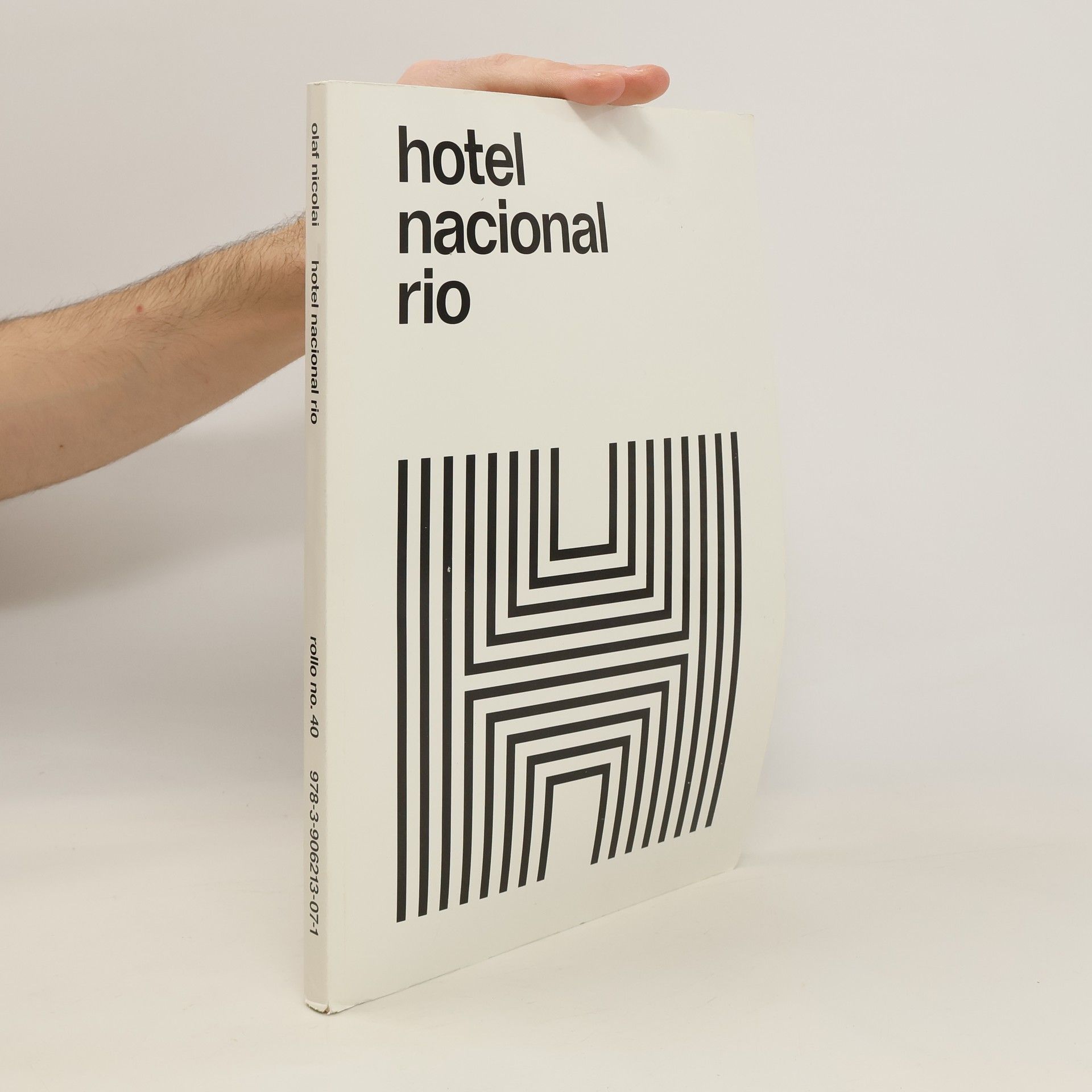Hotel Nacional in Rio with its trademark cylindrical tower, constructed between 1968-1972, is one of the highlights of architect Oscar Niemeyers later work, yet has been abandoned and left to deteriorate for some time. German artist and photographer Olaf Nicolai visited the site in September 2011 to exhaustively document its state of disrepair through hundreds of images. From elevator shafts plunging into darkness, stairways covered in guano and empty swimming pools, to rotting ceilings and wide interior spaces stripped bare, the collection of photos of this once shining jewel of architecture and luxury is as haunting as it is regrettable.
Olaf Nicolai Boeken






Im März 2016 wurde von Olaf Nicolai die Einzelausstellung 7 Postkarten für Innsbruck im barocken Palais Fugger-Taxis eröffnet, in dem sich bis ins frühe 20. Jahrhundert eine Poststation befand. Auf die Nutzung des Ortes, an dem Nachrichten und Botschaften verteilt wurden, nahm seine filmisch-skulpturale Arbeit Bezug. Über den Zeitraum der Ausstellung wurden in regelmäßigen Abständen sieben "sound postcards" nach Innsbruck geschickt. Ihre Absenderin war eine Sängerin, die sich von verschiedenen Orten ihrer Reise meldete. Als Notation für die Lieder dienten ihr sieben Fotos von Steinschnitten, die Nicolai für die Ausstellung gefertigt hatte und die in Innsbruck zu sehen waren. Im Verlauf der Ausstellung wurde jeder Song mit dem entsprechenden Bild in einer 35 mm-Filminstallation aufgeführt, sodass die Besucher über die Dauer der Ausstellung das Entstehen der Arbeit beobachten konnten. Die Publikation führt die musikalischen Botschaften im Medium Buch neu auf.
The Das Neue Alphabet series is now complete and available as a boxed set. Its twenty-six volumes develop a panoramic view of current theoretical formulations and contemporary artistic practice. The series came out of the last long-term HKW project, which ran for several years under the directorship of Bernd Scherer. Alphabets, binary code, DNA — the current explosion of knowledge relies on the world being dismembered and divided into the tiniest of units, making it amenable to computation and manipulation. Languages, codes, and other representational modes based on symbols are thus put in the service of political control, surveillance technologies, and economic exploitation. Das Neue Alphabet (The New Alphabet) series counters this process of functionalization with poetic discombobulations, sensuous recodings, and creolizations. The project is organized around the formal principle of constellation: a range of different themes, modes of representation, artistic positions, and graphic elements are combined and recombined in multiple variations. The series sets out to formulate new semiotic worlds conducive to alternative knowledge production.
"An artistic contribution to the exhibition 'Bau [Spiel] Haus', and completes the catalog and reader published... as a third part. The material introduced there represents the starting point for the narrative and forms of play of these six text miniatures and posters" -- back cover of portfolio
The inclusion of concepts of play and playfulness in artistic development, a time-tested approach that was specific to the Bauhaus, is the focus of this major exhibition. Progressive teaching theories from the nineteenth century are juxtaposed with modern-day equivalents; Friedrich Fröbel's "Play Gifts" meet with LEGO Architecture and Silicon Valley creative laboratories. Today, as computer games have gained broad social acceptance and intelligence has become programmable, questions of innovation and creativity in our models for working and living seem more topical than ever. Bauhaus masters like Walter Gropius and Johannes Itten already recognized the far-reaching social and artistic potential of play - at a time when something new had to be made out of the ruins of the old world. They made play the basis of their interdisciplinary preliminary courses, and the idea of combining work and play manifested in Itten's inaugural lecture of 1919 came to shape the Bauhaus programme. The Bauhaus school used the human urge to play as an engine to drive development and design. With this exhibition, Neues Museum traces this tradition and explores the ways the Bauhaus legacy is being passed on via the present to the future. -- publisher's statement
Four times through the labyrinth
- 320bladzijden
- 12 uur lezen
"This book on labyrinths is wonderful! It enlarges the traditional catalog of labyrinths so much and so well, being itself labyrinthine," remarked Jean-Luc Nancy, the French philosopher. Sadie Plant, author of Zeroes + Ones: Digital Women and the New Technoculture, has now translated Labyrinth into English. The starting point for this transcript of four lectures is a public art work that Olaf Nicolai installed in Paris in 1998. By exploring and combining a broad spectrum of topics that relate to the theme of the labyrinth, this book serves as both, a reference system to Nicolai's work as well as an independent source book dealing with labyrinthian matter ranging from the minotaur to the floorplans of IKEA. Published in collaboration with Rollo Press.
„Noms de Guerres“ ist eine Serie von Texten in der Tradition experimenteller Poesie. Das Wortmaterial für diese Arbeit stammt aus einer Recherche über Militäroperationen nach 1945 und besteht ausschließlich aus den für diese Aktionen verwendeten Codenamen. Kurze Erläuterungen zu den jeweils bezeichneten Operationen befinden sich am Ende des Buches.
"The publication Why women like to buy textiles that feel nice accompanies Olaf Nicolai's curtain. It is conceived as a textual system of references to this work in the form of an annotation apparatus with index of names and subjects. In the style of experimental literature the story creates in seven chapters a narration beyond linear logic. The study on "Die Arbeitslosen von Marienthal" (literally “the unemployed of Marienthal”) serves here as the starting point to unravel a complex web of references spanning from the decline of the textile industry to sociological opinion research, the development of consumer desires and psychological studies on tactile perception of fabrics, creating an intricate textural web" -- publisher note.